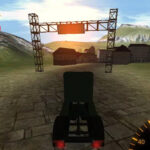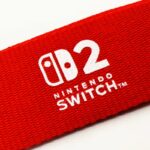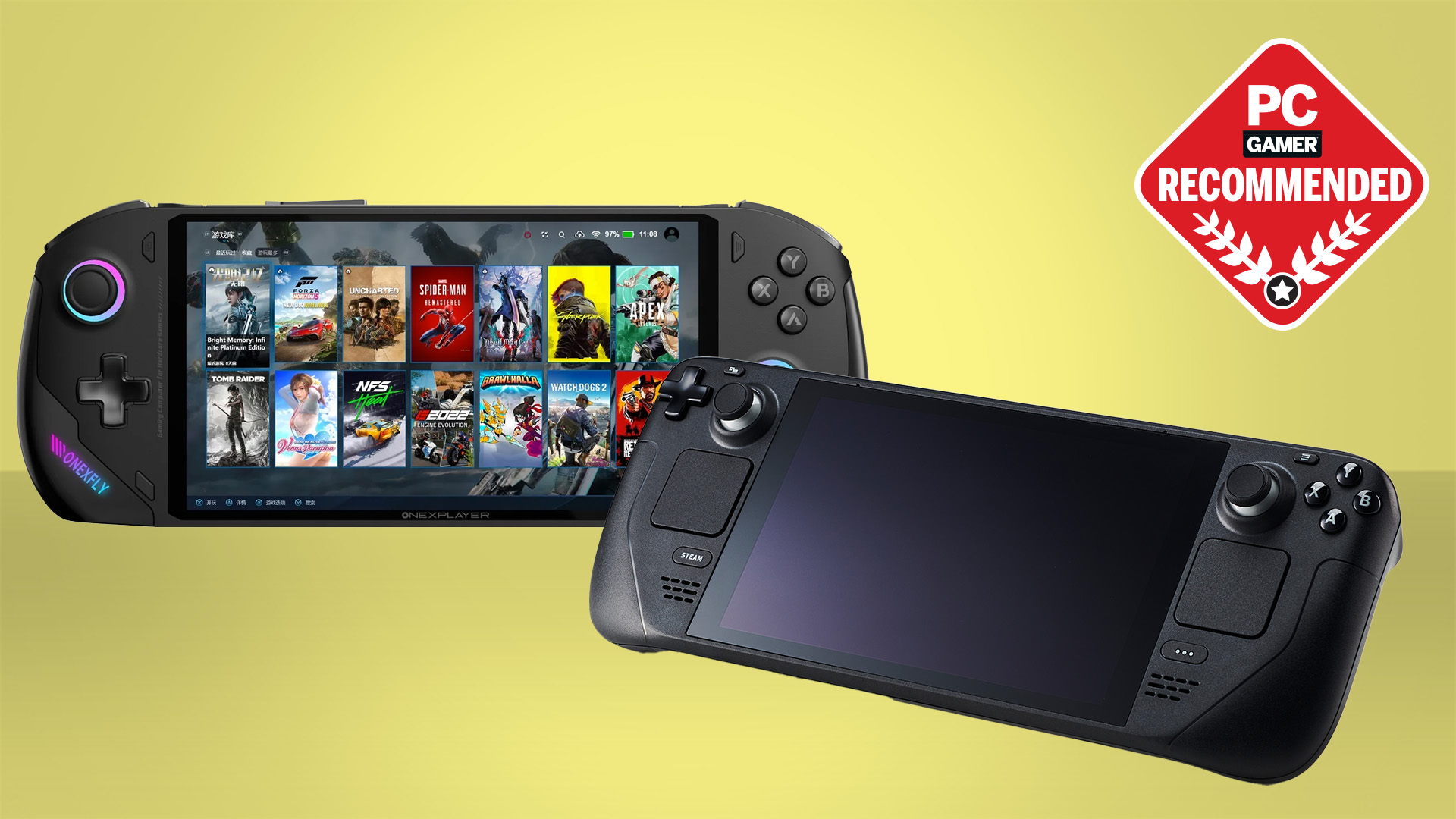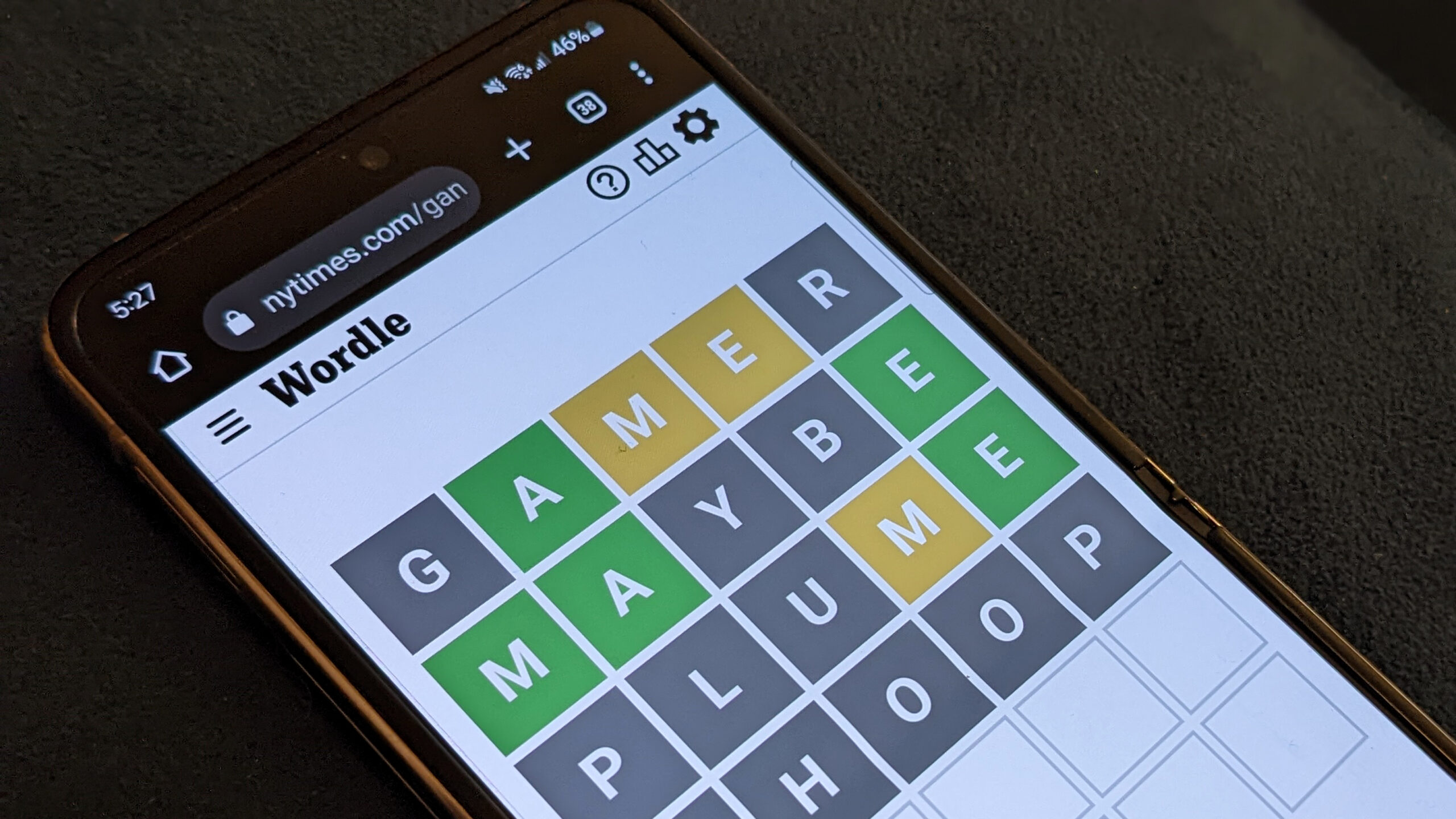(Image credit: Future)
1. The list in brief
2. Best overall
3. Best budget
4. Best big screen
5. Best small screen
6. Also tested
A dream shared by PC gamers everywhere has been to take our entire gaming PCs on-the-go. From LAN parties to powerful gaming laptops, we’ve gotten close to portable gaming nirvana, yet no solution quite as simple as pulling out one of the latest generation of PC gaming handhelds and gaming from near enough anywhere.
We’ve tested most of today’s top gaming handhelds and come away impressed with many of them. Though one stands out among the crowd. The best handheld gaming PC is OneXPlayer’s OneXFly, which blends a 7-inch screen with AMD’s awesome Ryzen 7 7840U chip.
It only took a few good mobile processors to make the gaming handheld dream a reality. The first handhelds out of the gate were a little underpowered, clunky even, then Valve made the Steam Deck and suddenly we’re all interested. It’s a compact, relatively cheap machine that delivers your Steam library wherever you like—my 9-year-old self would pass out at the thought of it. Though it’s not just Valve, and we have genuine Windows-powered pocket-sized PCs nowadays.
One key difference between the Steam Deck and the other handhelds below is Valve’s choice of operating system. It uses a Linux-based OS called SteamOS, which is tailored to the handheld gaming experience and Valve’s own storefront. The rest of them use Windows. There are benefits and drawbacks to both. Valve’s OS is sleek yet a little restrictive on which games you can play due to anti-cheat measures. While Windows is, well, Windows—it’ll play anything but it can be a little clunky to use on a touchscreen. Luckily, third-party apps help make it a little more user-friendly.
Below you’ll find all of our recommendations: from the budget-friendly Steam Deck to more overpowered options.
The quick list
Best overall
The best overall
Not only does this handheld pack a punch with AMD’s latest mobile chip, but it’s also lighter and smaller than a lot of the competition.
Best value
The best value
The Steam Deck is unbeatable in one very important way: it’s far cheaper than most of the competition. It’s definitely the best value option, and it’s a neat gaming device for the money, of course.
Best big screen
The best big screen
If you can’t stand the 7-inch screens most popular among handheld gaming PCs today, the Aokzoe’s slightly larger 8-inch screen actually makes all the difference. It’s engrossing.
Best small screen
The best small screen
This handheld is a traveller’s dream. It’s small enough not to think twice about packing it, but it’s still extremely powerful.
The best handheld gaming PC
(Image credit: Future)
(Image credit: Future)
(Image credit: Future)
(Image credit: Future)
(Image credit: Future)
(Image credit: Future)
(Image credit: Future)
(Image credit: Future)
(Image credit: Future)
(Image credit: Future)
The best all-round handheld gaming PC has to be the OneXPlayer OneXFly. Blending the best processor with a sleek form factor, it has us mightily impressed.
If you want the screen size of the Steam Deck, but like the idea of a smaller device, the OneXFly is a great middle point between the Deck and the oh-so-tiny Air 1S. It really is a gorgeous machine, with a screen bezel so slight as to make it feel like the central area is almost all panel.
And it’s a bright display, too, rocking a 1080p resolution with a 450 nits peak luminance level. It’s also matching the 120Hz refresh rate of the ROG Ally, and that makes this one of the best-looking devices of the lot.
So, good screen, a size that will slide into your day-bag, but how does it perform? The handheld’s favourite AMD 7840U APU is there, and alongside the 48Wh battery it can game at an impressive level for a decent amount of time in 30W trim. With everything at max, including the Windows power settings, the OneXFly delivers 69 minutes of gaming uptime measured by the PCMark 10 gaming battery test. Use the OneXPlayer software and you can easily drop the TDP down to a manageable 15-20W and stretch the battery life considerably without seriously diminishing performance.
The Radeon 780M RDNA 3 integrated GPU is surprisingly adept at 1080p gaming, generally on medium game settings. The same even rings true when I’ve been cutting TDP down to 15W to play Baldur’s Gate 3.
The rest of the base spec is pretty standard for the current crop of gaming handhelds—16GB RAM, 512GB SSD—but it’s using a speedier version of memory in its LPDDR5X-7500 kit. And that makes it a super responsive Windows-based gaming machine.
While you will pay a good deal more than a Steam Deck for the OneXPlayer, it does feel like a fair starting price for this sort of top performance.
A surprisingly sleek Windows machine, this handheld PC ticks all the boxes.
Read our full OneXPlayer OneXFly review.
The best value handheld gaming PC
(Image credit: Future)
(Image credit: Future)
(Image credit: Future)
(Image credit: Future)
The Steam Deck is the handheld device that I could only dream of as a child; a compact, cheap gaming PC than can play most of my games and slip inside a backpack. It would’ve hands-down bested playing on the fold-away screen atop of my Gamecube running off a 12V cigarette lighter in the back of my dad’s car, though I have fond memories of that. In a way, the Steam Deck captures some of that retro gaming feel—it lets you find new time to play games.
I’ve smashed through many more games with the Steam Deck than I ever would have relying solely on my desktop. That’s true of many of these handhelds, but the Steam Deck is a very sleek experience. That’s because Valve has commissioned its own Linux OS, SteamOS, to run on the device, and it’s built from the ground up for gaming. It plays best with Steam games, but I’ve loaded the Heroic Games Launcher on it to boot into Epic and GOG games with ease, too.
Performance is measured by playability on the Deck, not so much as we might measure it on desktop by how many frames per second you can get. It’s really not a powerful device, with fewer older CUs compared to some handhelds today, but that’s alright as it’s only pushing an 800p screen. Generally, it gets by just fine in modern games, but you might find you primarily see it as an indie-game machine.
That’s how I use my Steam Deck anyways. It’s allowed me to find the time to play so many indie and wholesome games I’d never normally get space to play on my desktop PC. Though the Deck is also great for game streaming, if you have a GeForce Now subscription or something similar. That’s how I play most demanding games on the device, rather than rendering them locally.
As a value proposition, there’s really no beating the Steam Deck. The other handhelds I’ve been using have it beat in performance, there are some that deliver frame rates and resolutions far in excess of the Steam Deck, but none anywhere near as affordable.
That’s the Deck’s best feature: it’s so much cheaper than any of the other handhelds we’ve tested. To be fair to the ROG Ally, it gets pretty close considering its higher performance spec, but the 64GB Steam Deck is still the value champion at near to half the price. Also if something breaks, you can buy an official part and replace it yourself with relative ease. I have two videos on how to swap out the Steam Deck’s SSD and how to swap out the Steam Deck’s thumb sticks, if you’re interested.
Read our full Steam Deck review.
The best big screen handheld gaming PC
(Image credit: Future)
(Image credit: Future)
(Image credit: Future)
(Image credit: Future)
(Image credit: Future)
(Image credit: Future)
(Image credit: Future)
(Image credit: Future)
(Image credit: Future)
(Image credit: Future)
(Image credit: Future)
(Image credit: Future)
The Aokzoe A1 Pro is a handheld gaming PC in the mould of the Asus ROG Ally, sporting essentially the same excellent AMD processor and a bigger screen, but without some of the restrictive Asus-ness the Ally suffered with (or that devices dodgy microSD port).
The A1 Pro is the handheld I keep going back to when I’m away from home. Straight up, I will admit it’s not particularly travel-friendly in that it is rather cumbersome when you’re thinking about slipping it into your carry-on for a long journey. But what makes it a winner for me is the experience when you get where you’re going.
With its big screen and big battery, it’s a fantastic substitute for your gaming PC when you’re away. And, because it’s using the now-ubiquitous eight-core Ryzen 7 7840U chip, it feels slick to use in Windows and the 12CU GPU part is very capable of surprisingly high performance gaming. It’s been my Baldur’s Gate 3 machine during my summer holidays [vacation] this year.
The AMD Ryzen 7 7840U chip at the heart of the A1 Pro is effectively the same as the Z1 Extreme—it sports eight Zen 4 processor cores, with 16 threads, and can reliably hit 5.1GHz under single core load.
It also comes with up to 64GB of LPDDR5 and 2TB of SSD storage. Admittedly that’s overkill in a handheld, and the 16GB / 1TB spec I’ve been testing absolutely works for me. Though, it has to be said, Aokzoe is now only shipping 32GB of RAM as a minimum, with the lowest spec, $999 version being a 32GB machine with a 512GB SSD. The 16GB version in my hands is an early prototype system ahead of the full shipping product going into the wild. But it’s the same chassis as the older Aokzoe A1, and therefore pretty much a known quantity.
With a 1920 x 1200 display it also has more screen real estate than most others, especially with that 8-inch expanse. That makes PC games that would be otherwise barely playable on a small screen eminently enjoyable. And it’s got a huge amount of connectivity, storage, and kick-stand, so what’s not to like? Oh yeah, it’s hugely expensive at $1,359.
You have to really want this device for its large 8-inch screen and 1200p resolution, as it doesn’t come cheap. Especially compared to a handheld like the ROG Ally, you’re paying for the privilege of the larger device.
But its design does have some significant quality of life benefits over both the Ally and the Steam Deck. Though it does still ship with Windows 11 and that is in no way a handheld OS. In the Ally, Armoury Crate does a surprisingly good job at mitigating a lot of Windows’ handheld/touchscreen foibles, but the OneXConsole software is certainly a bit more clunky.
But the hardware is excellent, and for me that’s the most important thing because the software can be tweaked and tailored to your specific needs.
Read our full Aokzoe A1 Pro review.
The best compact handheld gaming PC
(Image credit: Future)
(Image credit: Future)
(Image credit: Future)
(Image credit: Future)
(Image credit: Future)
(Image credit: Future)
(Image credit: Future)
(Image credit: Future)
(Image credit: Future)
I often spare a thought as to whether I should pack my Steam Deck when travelling and trying to pack light. It’s a fine problem to have: my portable PC isn’t quite portable enough to slip it into my backpack without debating it in my head. Should I? Shouldn’t I? Often I side with taking it anyways, but now that I’ve tried a slimmer device in the Ayaneo Air 1S, I don’t spare a second thought on packing it with me. I’m all about that compact form factor.
The Ayaneo Air 1S is incredibly portable. Described as a thin and light handheld, it comes in at just 21.6mm thick and weights only 450g. You needn’t worry about its inclusion in your luggage if you’re travelling long distances, as I can attest after recently taking this handheld with me to Malaysia. It comfortable fit in my carry-on luggage, making for a pleasant trip playing Cult of the Lamb.
This device comes with a 5.5-inch 1080p AMOLED screen; not the biggest panel for in-depth strategy games or tons of text, but it’s generally able to deliver a very crisp overall image. I don’t mind its restricted real estate at all. My Steam Deck has become my pathway to playing more indie games than I ever normally would, and the Ayaneo fulfils that role incredibly well.
Point is, it’s a handheld gaming PC that feels more like a handheld gaming device of old than any other I’ve used. It’s a powerful GameBoy Advance, and boy, is it powerful.
The Ayaneo Air 1S may look like it needs a downgrade to stuff all its parts into that tiny shell. But, no. It comes with the same AMD Ryzen 7 7840U chip found within the Aokzoe A1 Pro or the OneXPlayer OneXFly. That’s a full eight-core, 16-thread Zen 4 processor. I still can’t really believe that sort of spec comes in a compact PC at all. It’s paired up with a Radeon 780M integrated graphics, powered by 12 RDNA 3 CUs—four more CUs than the Steam Deck’s RDNA 2 chip.
The model I have comes with 32GB of LPDDR5X memory and a 2TB 2280 NVMe SSD. Yeah, 2280. If you’re familiar with the Steam Deck, or really most PC gaming handhelds, you’ll know they use the compact 2230 SSD form factor. That’s not the case here. This is a full 2280 SSD. Though I do admit that Ayaneo’s claims of this making for an easy SSD upgrade didn’t go as easily as I’d hoped.
The Ayaneo is stuffing a lot of memory and storage into this machine for not as much money as you’d think, however.
This 2TB + 32GB model is still a whole lot more than the price of a Steam Deck, but I would say that for a 32GB, 2TB, eight-core Zen 4-powered PC, it’s not awfully priced.
Read our full Ayaneo Air 1S review.
Also tested
The ROG Ally is the best handheld gaming PC on the market, and probably the best budget gaming PC full stop. What prevents us recommending it right now is a microSD card issue that Asus doesn’t seem to have much to of an answer to beyond an RMA.
PC Gamer score: 86%
For
Impressive gaming performanceGreat screenExcellent docked experienceReally quietLightweight
Against
Weak battery life
The Logitech G Cloud is a neat cloud gaming handheld whose inconsistent streaming performance and high price keep it from replacing your smartphone or tablet any time soon.
PC Gamer score: 65%
For
Lightweight and comfortableEasy to access Cloud gaming library
Against
Latency issues No LTE options Finicky joysticksHigh price
This pricey handheld feels great to hold but it’s unquestionably a niche product, and the lack of graphics oomph is ultimately its undoing.
PC Gamer score: 64%
For
Excellent build qualityVersatile and easily portableFamiliar Windows OS
Against
Integrated graphics lack powerSome games simply don’t runCan be frustratingly fiddly to use











